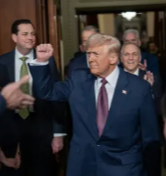Campaign teams risk irrelevance if they do not evolve with the shifting social media battleground, as highlighted in the January 2024 Pew report.
What to Know:
- YouTube and Facebook remain the most-used platforms, but their user bases skew older.
- TikTok has surpassed Instagram, Snapchat, and Twitter in reach among 18–29-year-olds, now engaging 62% of this demographic.
- Instagram use is up across the board, with notable gains in suburban and urban demographics.
- Platform silos are increasingly pronounced: Facebook dominates in rural areas, and TikTok in cities.
- Campaigns still overinvest in Facebook while neglecting the fast-growing influence of short-form video platforms.
In the run-up to the 2026 midterms, the digital battlefield is neither neutral nor level. Pew Research Center’s January 2024 report indicates that political campaigns' heavy reliance on Facebook and YouTube for advertising and supporter organization might be misaligned with how and where Americans consume political content.
Image generated by DALL-E
If 2020 was the year of pandemic-driven digital innovation and 2024 was about streaming-first political content, then 2026 is shaping up to be the year of generational fragmentation. The report’s findings are strategic imperatives for campaign operatives. Misreading the social media landscape is a missed opportunity and a self-imposed blind spot in the nation’s most high-stakes communication war.
The Core Platforms: Still Powerful, But Not Universal
Pew’s top-line statistic is both reassuring and misleading: YouTube and Facebook remain dominant, with 83% of U.S. adults using YouTube and 62% using Facebook. This initially appears to confirm the long-standing digital approach of major political campaigns, particularly for Republicans, who have historically performed well on Facebook.
Source: Pew Research Center, “Americans’ Social Media Use” (Jan 2024)
But deeper demographic cuts complicate that picture. Facebook’s user base is aging. Among 18–29-year-olds, only 37% say they use Facebook regularly, compared to 62% who report using TikTok. For strategists focused on building lasting coalitions, that’s a red flag. Facebook remains effective for mobilizing base voters and securing donations, but its reach is limited when it comes to engaging first-time or disaffected voters, particularly in swing districts characterized by large college-age populations.
The TikTok Surge: Gen Z’s Campaign Arena
TikTok is no longer a novelty. For adults aged 18–29, usage now parallels Facebook's general public penetration at 62%. Even more striking: nearly half of Americans aged 30–49 now use the app. The implications are clear. TikTok is Gen Z’s entertainment feed; it is also their search engine, news aggregator, and political education tool.
Image generated by DALL-E
Despite this, most campaign budgets barely touch the platform. Many Democratic strategists cite data privacy concerns, while Republicans often struggle to develop content that feels native to the medium. But ignoring TikTok because of style or security misses the bigger picture: voters under 35 are forming political opinions in 30-second clips. A candidate's absence from social media allows external, often influential creators to control their narrative.
Instagram’s Urban and Suburban Edge
Instagram use continues to climb, especially among women, suburban voters, and communities of color. Instagram, though not as algorithmically chaotic as TikTok, still prioritizes creativity, consistency, and emotional resonance. These are all traits that political consultants tend to underestimate in digital ad development.
Screenshot from Source: Pew Research Center, “Americans’ Social Media Use” (Jan 2024)
Campaigns that rely on static Instagram graphics or recycled TV clips are not just underperforming; they are demonstrating a lack of fluency. Authenticity is what wins on Instagram. That may mean handing over more control to creators or hiring digital natives to lead platform-specific storytelling efforts.
Platform Silos: Geography and Age Now Define Reach
One of the most overlooked insights in Pew’s data is the sharp divide between platform usage by age and geography. Facebook continues to dominate in rural America and among voters over 50. TikTok, Instagram, and Snapchat skew urban, diverse, and under 40. YouTube spans all groups but is increasingly dominated by niche channels and algorithmic echo chambers.
Screenshot. Source: Pew Research Center, “Americans’ Social Media Use” (Jan 2024)
This “platform siloing” means that campaigns must craft not just messages but entire content strategies tailored to each audience and channel. Digital strategies must be tailored to specific contexts, as a "one-size-fits-all" approach is no longer effective. For example, a TikTok-focused campaign in Phoenix would differ significantly from a Facebook-heavy campaign in rural Ohio, highlighting the importance of customized strategies.
Where Campaigns Are Falling Behind
Most campaigns, especially down-ballot or legacy PACs, continue to allocate the majority of their digital budgets to Facebook and YouTube, despite the shift in user behavior. Facebook offers robust ad targeting, easy data collection, and a familiar interface. But it’s also saturated and less trusted by younger users.
Neglecting TikTok and Instagram has strategic consequences. Not only do campaigns lose access to critical voter segments, they also forfeit narrative control. Influencers, not candidates, are shaping how issues are framed. That’s a fundamental inversion of the campaign-consumer power dynamic.
Smart Adaptation: How to Tailor Tactics by Platform
Campaigns should strategically choose their social media platforms, focusing on intentional presence rather than ubiquitous reach.
Image generated by DALL-E
Here’s what the Pew report suggests for campaign strategy moving forward:
- YouTube: Use it to host long-form interviews, issue explainers, and opposition research. But focus on channel partnerships and creator integrations, not just pre-roll ads.
- Facebook: Still effective for mobilization, fundraising, and direct response ads, particularly among older, rural, and suburban voters. However, it is not reliable for shifting narratives or reaching undecided voters.
- Instagram: Best for visual storytelling and candidate relatability. Behind-the-scenes content, endorsements from micro-influencers, and swipe-to-donate tools perform best.
- TikTok: Requires native fluency. Invest in creators who understand the culture. Quick-response videos, humorous takes, and “duet” collaborations can push messages organically.
- Snapchat: Still underused, but critical in reaching younger voters in key states. Geo-targeted lenses and ephemeral content work well during GOTV and debate season.
- Threads and X (formerly Twitter): Use with caution. Threads is still finding its user base. X remains volatile but useful for elite signaling and rapid-response war rooms.
The 2026 campaign season will punish digital laziness. Overreliance on Facebook ads will mean missed engagement with the most mobilizable younger cohorts. Meanwhile, fear-driven neglect of TikTok creates narrative vacuums that opponents and independent creators are happy to fill.
There’s also the risk of misunderstanding what “engagement” actually means. While "vanity metrics" like likes, shares, and follows may not directly lead to voter turnout, there is a clear correlation between political disengagement and digital alienation. Voter disengagement stems from campaigns failing to communicate in preferred languages or on preferred platforms.
Wrap Up
Pew’s January 2024 social media report does not tell campaigns what to do. It reveals what voters are already doing. The gap between those two things is where elections are decided. Platform preferences now fall along clear lines of age and geography, and the idea that one message or one channel can reach everyone is no longer realistic.
Campaigns that want to win in 2026 need to move quickly and speak the language of each platform with confidence. Digital storytelling is not a side task—it is as critical as door knocking or ad buys. Ignoring TikTok is not a neutral decision. It means giving up the conversation to someone else. Pouring more money into Facebook is not a bold move. It is a sign of hesitation. The window for adjusting strategy is open, but not for long. The next campaign will not be watched on cable. It will be shaped by what people are seeing on

.png)



.png)